Impressão SLS serviço
Prototipagem rápida e produção de peças, peças tão rápidas quanto 10 dias, inspeção 100% para cada peça
A nossa certificação ISO 9001 garante uma qualidade de nível superior em cada lote
- Sem quantidade mínima de encomenda
- Rapidamente fabricado em poucos Dias
- Prototipagem rápida e séries completas de produção
- Mais de 30+ materiais de metal e plástico disponíveis
o que é a impressão SLS 3d
A sinterização selectiva por laser (SLS), também conhecida como sinterização selectiva por laser ou tecnologia de sinterização selectiva por laser, foi proposta pela primeira vez por Carl Deckard, da Universidade do Texas, nos Estados Unidos, e o equipamento protótipo comercial foi oficialmente lançado no mercado em 1992.
A tecnologia de impressão 3D por sinterização a laser utiliza principalmente o princípio básico da sinterização a alta temperatura de materiais em pó sob irradiação laser, e realiza um posicionamento preciso através de um dispositivo de posicionamento de fonte de luz controlado por computador, e depois sinteriza e empilha camada a camada. Por conseguinte, a tecnologia SLS também utiliza o método de empilhamento e empilhamento. A principal diferença é que, antes da irradiação, é necessário colocar uma camada de material em pó e, em seguida, o material é pré-aquecido a uma temperatura ligeiramente inferior ao ponto de fusão e, em seguida, o dispositivo de irradiação a laser é utilizado para digitalizar a secção transversal da camada, de modo a que a temperatura da parte irradiada do pó suba até ao ponto de fusão, para que seja sinterizada e forme uma ligação. Em seguida, o processo de colocação de pó e sinterização é repetido até que todo o modelo seja impresso.

O processo SLS suporta principalmente matérias-primas em pó, incluindo pó metálico e pó não metálico, e depois empilha-as por irradiação laser e princípio de sinterização. O princípio de impressão da SLS é muito semelhante ao da SLA, a principal diferença reside nos materiais utilizados e nas suas formas. As matérias-primas utilizadas pela SLA são principalmente resinas curáveis líquidas sensíveis aos raios UV, enquanto a SLS utiliza materiais em pó.
como funciona a impressão SLS 3d
√ Durante a impressão, toda a câmara de impressão é sempre mantida a uma temperatura ligeiramente inferior ao ponto de fusão do material em pó.
√ O material em pó é espalhado na superfície superior da peça formada e raspado.
√ É utilizado um laser de CO2 de alta intensidade para irradiar a secção da camada da peça sobre a camada recentemente colocada. O material em pó é sinterizado em conjunto sob a irradiação laser de alta intensidade e ligado à parte formada abaixo.
√Após a sinterização de uma camada da secção transversal, é colocada uma nova camada de material em pó através do sistema de colocação de pó e, em seguida, é impressa a camada seguinte da secção transversal.
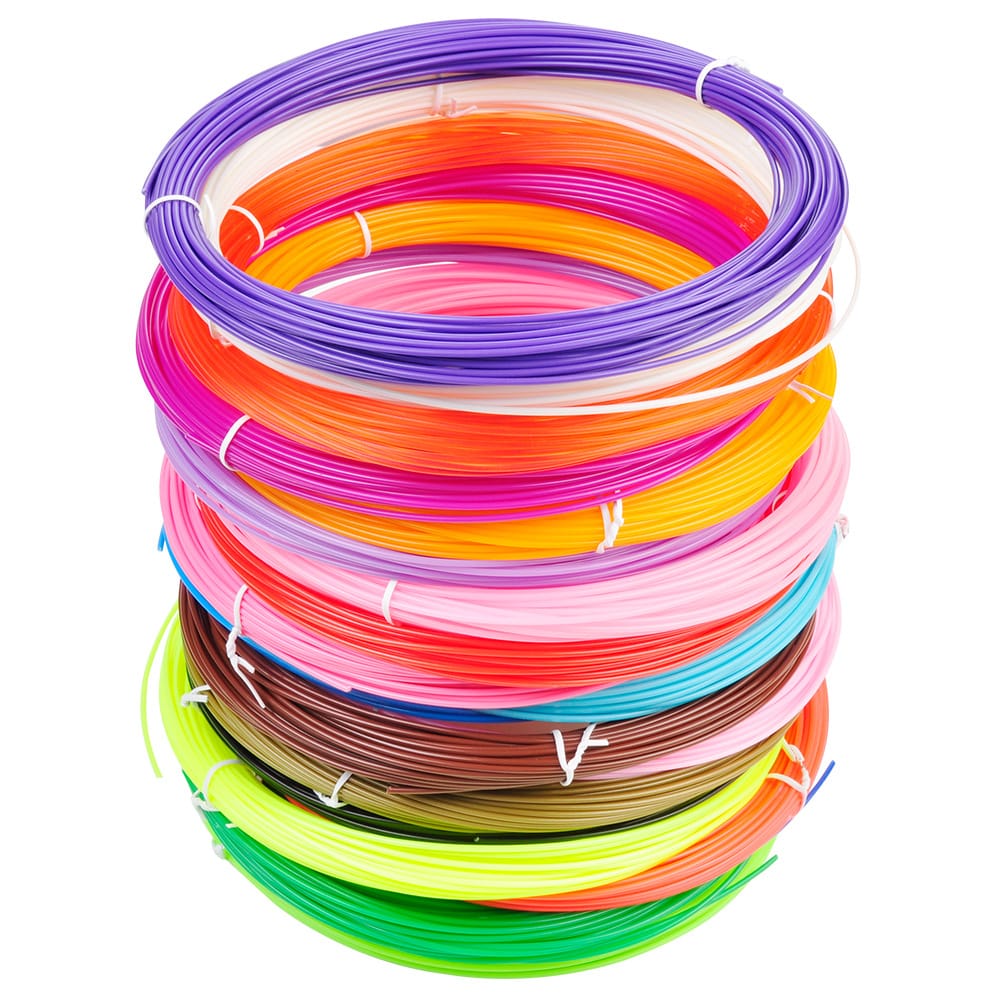
Materiais de impressão 3D SLS
A sinterização selectiva a laser (SLS) utiliza frequentemente o nylon como material principal, um termoplástico de engenharia versátil conhecido pelas suas capacidades de dupla finalidade na prototipagem funcional e na produção final.
As peças de nylon SLS destacam-se em termos de resistência, rigidez e durabilidade. Estes produtos finais possuem uma notável resistência ao impacto, suportando o desgaste repetido sem comprometer a sua integridade. Além disso, a resistência inerente do nylon à exposição aos raios UV, à luz, ao calor, à humidade, aos solventes, às flutuações de temperatura e à água garante um desempenho e uma longevidade prolongados.
Além disso, os componentes de nylon SLS também podem ser biocompatíveis e não sensibilizantes, tornando-os seguros para o contacto direto com a pele e adequados para várias aplicações. Esta versatilidade e durabilidade fazem das peças de nylon SLS uma escolha de topo para numerosas indústrias, desde a automóvel à médica, onde os componentes robustos e duradouros são fundamentais.
Vantagens e desvantagens da SLS
Vantagens do SLS:
(1) Pode produzir produtos com elevada resistência e excelentes propriedades materiais, podendo mesmo ser utilizados diretamente como produtos finais
(2) Existem muitos tipos de matérias-primas disponíveis, incluindo plásticos de engenharia, cera, metal, pó de cerâmica, etc.
(3) O tempo de construção das peças é curto e a precisão dos objectos impressos é muito elevada
(4) Não é necessário projetar e construir peças de suporte.
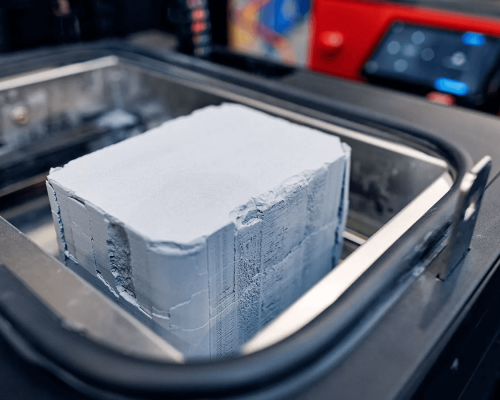
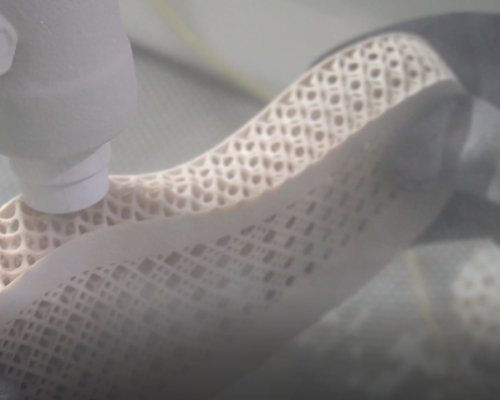
Desvantagens do SLS:
(1) Os componentes principais têm perdas elevadas e requerem um ambiente laboratorial especial.
(2) É necessário um controlo estável da temperatura durante a impressão, o pré-aquecimento e o arrefecimento são necessários antes e depois da impressão, e o pós-processamento também é problemático.
(3) O preço das matérias-primas e os custos de aquisição e manutenção são elevados.
(4) A superfície de moldagem é limitada pelo tamanho das partículas de pó e pelo ponto de laser, o que afecta a precisão da impressão.
(5) É impossível imprimir diretamente um desenho oco totalmente fechado, sendo necessário deixar orifícios para remover os materiais em pó
As nossas outras capacidades de fabrico
Somos especializados em impressão 3D, maquinagem CNC, fundição a vácuo, moldagem por injeção e fabrico de chapas metálicas, oferecendo uma grande variedade de materiais e acabamentos de superfície.

Maquinação CNC
Dispomos de um centro de maquinagem composto por fresagem-torneamento, 3 eixos standard, 5 eixos contínuos, fresadora de 3+2 eixos, perfuração e pós-processamento utilizando mais de 50 metais e plásticos diferentes, disponíveis em mais de 15 acabamentos de superfície. Tolerâncias até ±.0000394" (0.001mm )
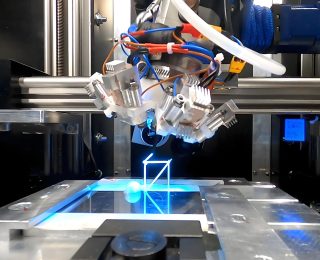
Fabrico de chapas metálicas
A HOFeng está equipada com robô de soldadura CO2, robô de polimento, robô de soldadura a laser, plataforma de soldadura a laser, máquina de corte a laser, máquina de soldadura a laser portátil, máquina de perfuração CNC, máquina de dobragem, máquina de rebarbação automática para melhorar a velocidade e a capacidade de lidar com aplicações de produção em massa.
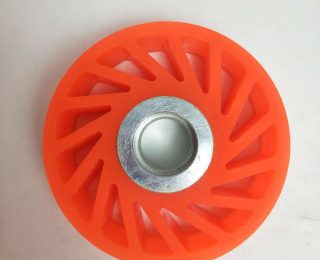
Serviços de fundição de uretano
A nossa certificação ISO 9001 permite-nos oferecer uma qualidade de topo em cada lote. Somos os especialistas em materiais de poliuretano para o desenvolvimento do seu produto
